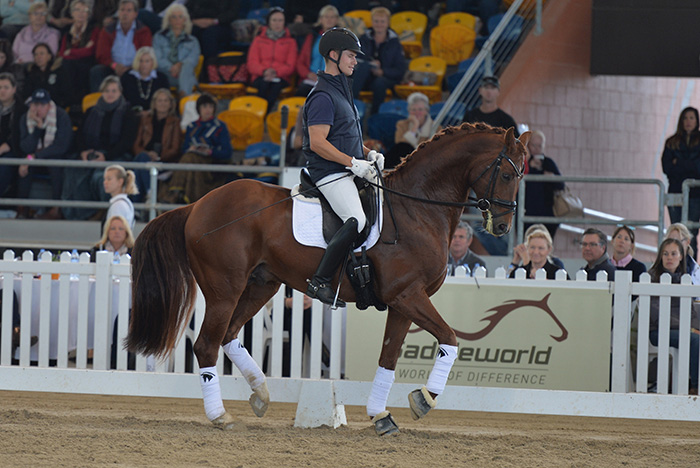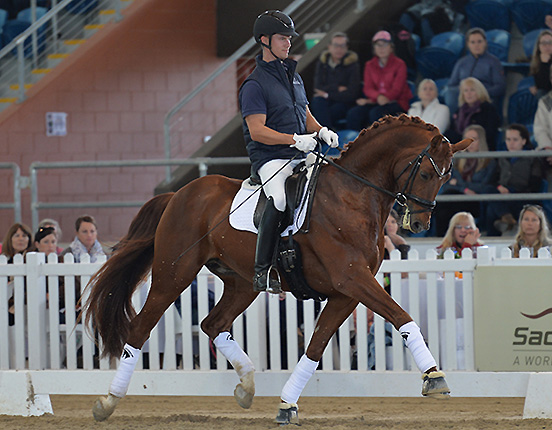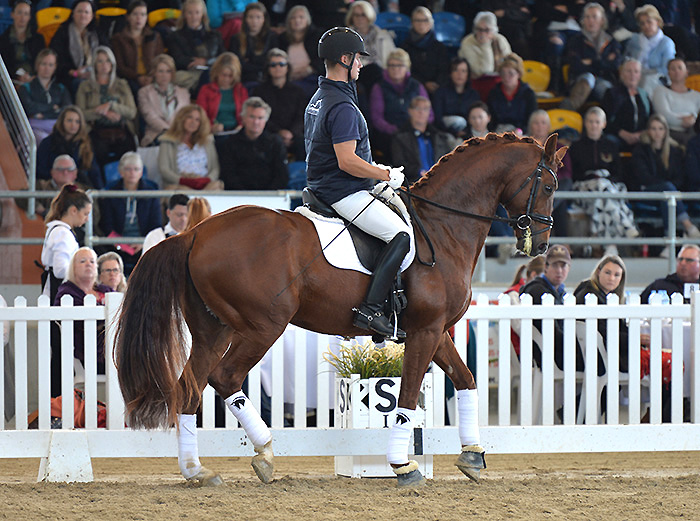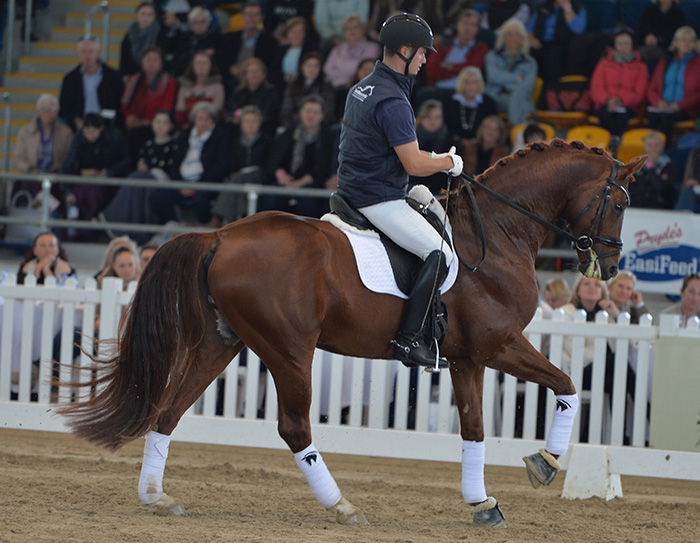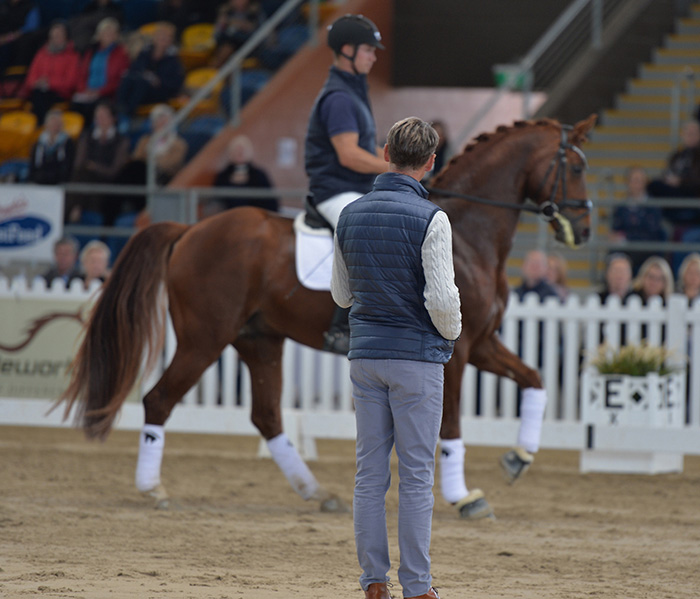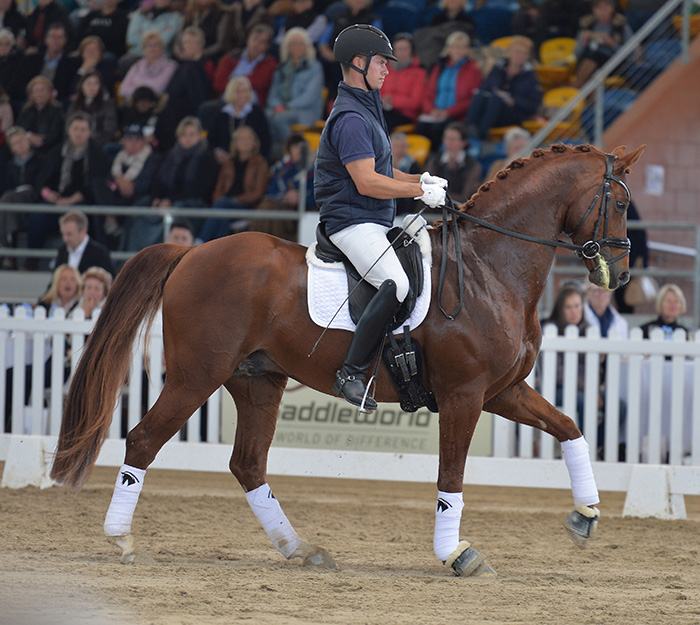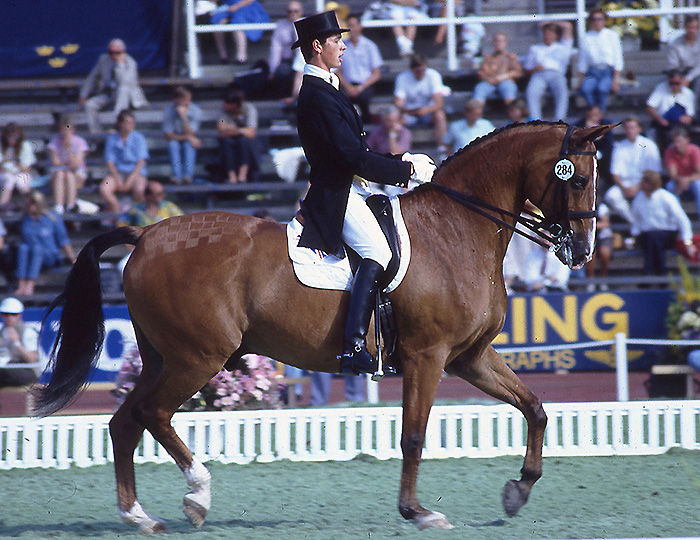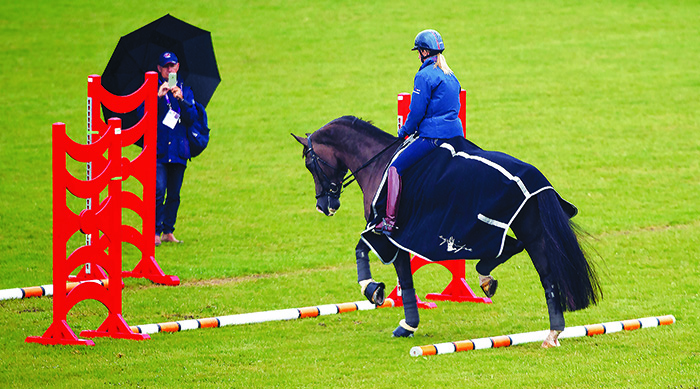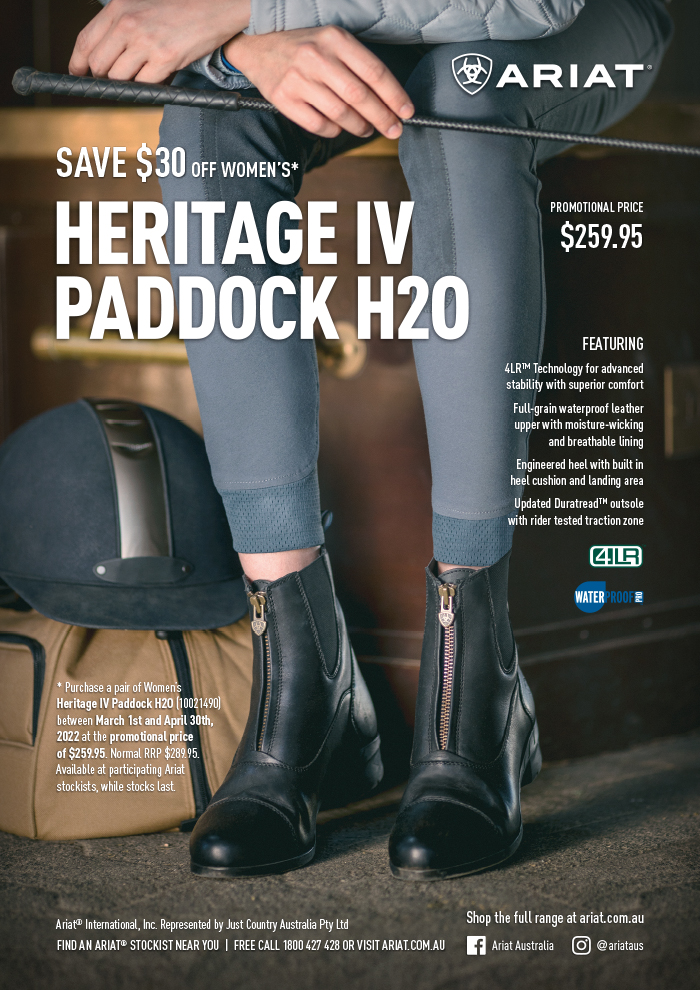Story Chris Hector, photographs Ros Neave. Part of a Masterclass at QSEC where Carl works with a Grand Prix combination…
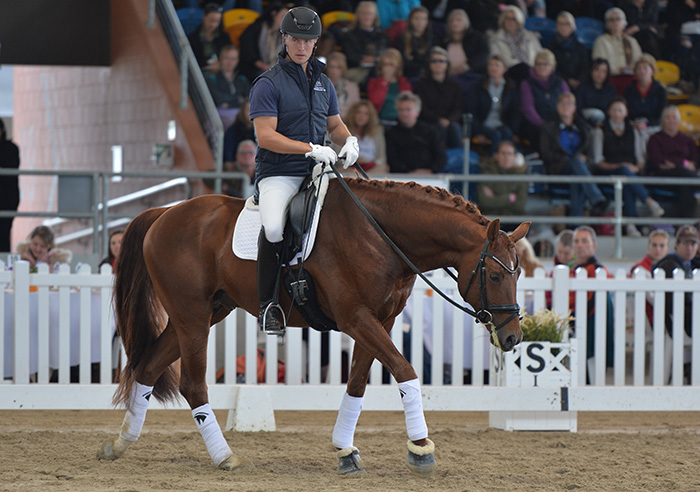 Elliot Patterson and the imported eight-year-old stallion Bluefields Berlin working with Carl Hester as the combination works towards competing at Grand Prix level. Carl is stressing just how difficult it is to make the step to Grand Prix:
Elliot Patterson and the imported eight-year-old stallion Bluefields Berlin working with Carl Hester as the combination works towards competing at Grand Prix level. Carl is stressing just how difficult it is to make the step to Grand Prix:
“We have tens of thousands of dressage riders in the UK, out of that we have only 50 Grand Prix horses, and ten of those would be international standard.”
He also stressed that it was not easy to pick which horses would make the cut: “Eight is a great age to assess a horse. Sometimes you look at them when they are six, and you think they are too lazy, not good enough to make it, but they come good when they are eight. This horse has three lovely paces and he has presence.”
“If I have any criticism of Australian riders, it is the length of rein, you tend to have your hands too far back.”
Carl is discussing the difference between Grand Prix passage and Young Horse passage: “You need to be going forward into passage, not coming back. The horse should think about trot in the passage instead of slow passage. Forward passage, go rising and help him come up in the middle. He’s thinking about piaffe and coming back, not thinking of pushing forwards, they must push to passage, and he is only going to learn pushing from the trot.”
“Go into medium, touch him with the whip, keep the contact, and ask for passage. Poor horses, we are always in their back, slow down in passage, they get weak in the back and start to sway. Go rising in passage, lots of riders do it, but you don’t see it in books. This horse is like a little rubber ball, he has such good spring.”
Now piaffe:
“It is important to walk into piaffe, and walk out. Teach the horse the mechanics of piaffe, lowering behind, not croup high. In piaffe it is good to think of sitting over your knee so the seat is light.”
Carl was making the canter work tricky: “When you are doing short canter, I want to think I can walk beside you, that short. This horse is a bit spikey in canter, let him sink to the floor and stretch. You push down with your seat and he goes hollow, think of sitting over the knee.”
“In the half pass, focus on the letter and the marker, looking through his ears, you are going right and looking left. Look at his ears, if the inside ear is down, he is crooked. I don’t want the half pass tighter, I want it forward and looser.”
And never get stuck in a rut:
“There are two types of seat, active and passive. Don’t ride hard all the time: active, passive, active. The main thing is to think about the horse’s back a lot.”
“I was lucky, Dr Bechtolsheimer gave me the opportunity to ride schooled horses early in my career, but to become horsemen, we need to be able to train our own horses, but it is not easy. It is so difficult, even if you know what you are doing. To get them to Grand Prix at the age of nine or ten is ideal. Then it is a matter of keeping them sound, and that is more about their mind. People asked, why did you retire Valegro when he was only 15 – he’d done enough, he’d traveled the world for six years, winning Gold, and traveling is a big part of tiring out horses. He could have gone on, but he had done enough.
Valegro warming up for the European Championships in Aachen
“You can’t school a horse every day or you will wear it out, physically or mentally. Train things, play with things that you don’t do in the Grand Prix. Some horses need to know where they are going, some need surprises. We hid the Grand Prix test from Valegro up to his first Grand Prix, but he looked uncomfortable at his first test, so from then on we did teach the Grand Prix test, he needed to know where he was going. Nip Tuck was the reverse, he needed to be surprised.”
For more wisdom from Carl, and some great pictures of Charlotte and Carl and their stars demonstrating, go to:




